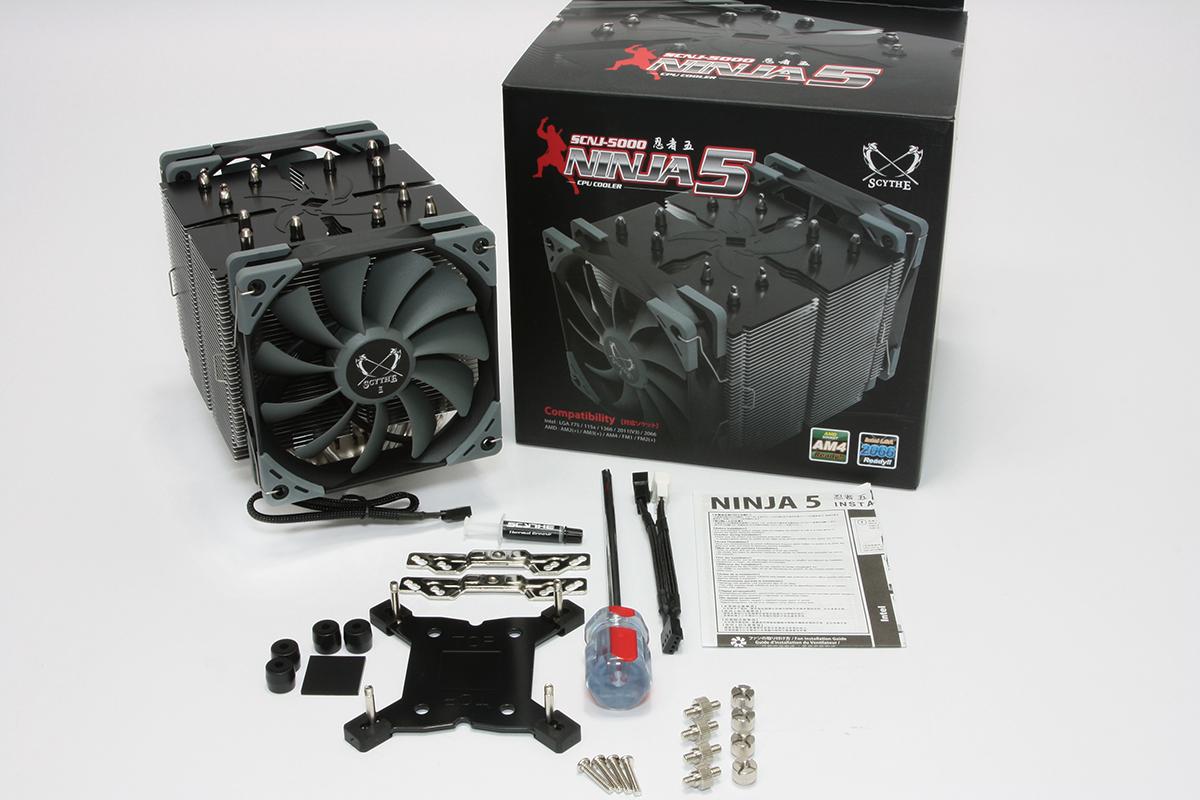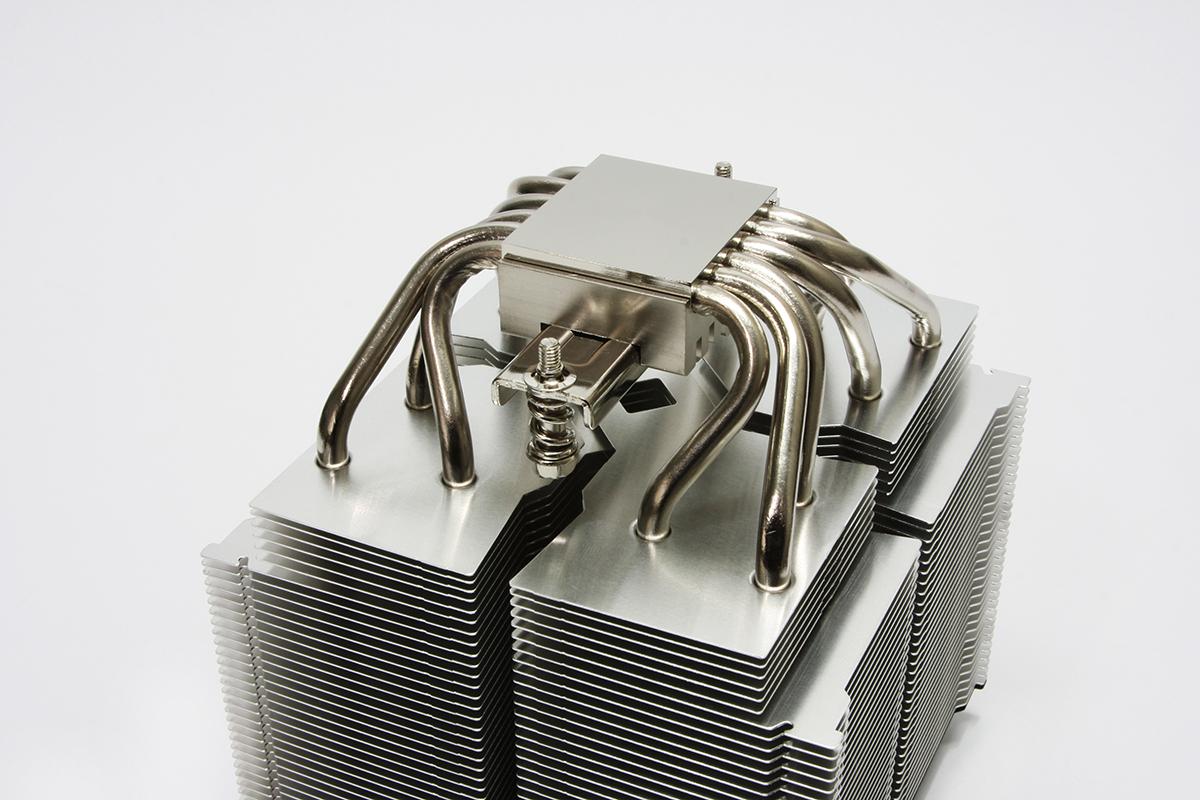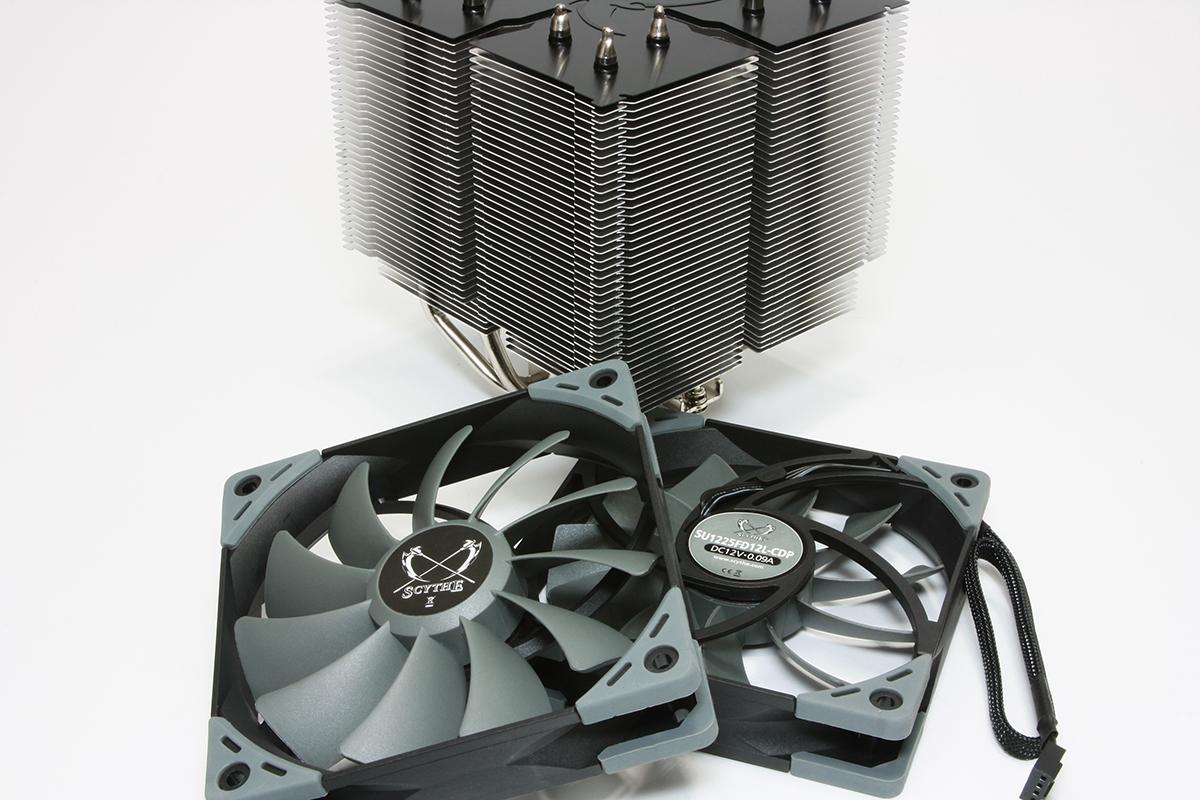Tom's Hardware Verdict
A strong contender as a large, heatpipe cooler for the moderate overclocker, the Scythe Ninja 5 struggles for outright cooling dominance for top-tier overclocking enthusiasts.
Pros
- +
Big, attractive cooler
- +
Nearly silent at full speed
- +
Budget-pricing for the large cooler segment
Cons
- -
Cooling performance on high-end CPUs with big overclocks
Why you can trust Tom's Hardware
Features and Specifications
Big, monolithic air coolers are known for relying on multiple heatpipes and stacks upon stacks of individual cooling fins to provide vast surface area to effectively dissipate thermal loads. Of these, the newly released SCNJ-5000 Ninja 5 is the latest thermal assassin from the twin-blade cooling company, Scythe. Sporting a pair of low-speed 120mm fans over a handsomely designed, interleaved, two-tone cooling fin stack, the Ninja 5 presents itself as an imposing heatpipe tower boasting near-silent operation, but still lands a little short in outright thermal performance for a cooler of its dimensions.
Offering support for nearly every modern CPU socket from both AMD and Intel, the Ninja 5 can sit atop just about every processor except Threadripper. Shipping with a fairly-standard cooler mounting kit, the Ninja 5 goes a bit further with the inclusion of a syringe of thermal compound and Phillips head screwdriver. Gone are the excuses for ‘not having everything you need’ to install this cooler.
Specifications
| Height | 6.25 inches / 158.8mm |
| Width | 5.125 inches / 130.18mm |
| Depth | 5.125 inches / 130.18mm (7.125 inches / 180.9mm with fans) |
| Base Height | 2.25 inches / 57.2mm |
| Assy. Offset | 0 inches (centered) |
| Cooling Fans | 2x 120 x 25mm |
| Connectors | 2x 4-pin PWM |
| Weight | 63.7 oz. / 1806g |
| Intel Sockets | 775, 115x, 1366, 2011x, 2066 |
| AMD Sockets | FM2(+), FM1, AM2(+), AM3(+), AM4 |
| Warranty | 2 years |
| Price | $60 |
The Scythe Ninja 5 features six, nickel-plated heatpipes that run vertically through the entirety of its 41 interleaved aluminum cooling fins, which can be seen overlapping through the center of the stack. The base of the cooler integrates a broadly-grooved, mini-heatsink that integrates with the mounting arm of the cooler. Each of the six heatpipes are symmetrically aligned and offset to allow linear airflow around them.
The nickel plated base of the cooler cocoons each of the six, 6 mm diameter heatpipes between the base block and the mounting top plate. The center bar is permanently secured to the cooler base and holds a pair of spring mounted machine screws in position to secure to the hardware CPU socket crossbars.
The strategic slotting of the cooler’s heatsink fin stack provides access for the long, narrow Phillip’s head screwdriver to reach each of the machine screws from above the cooler when securing the cooler to the mounting braces.
Twin Scythe Kaze Flex 120 mm fans adorn the front and rear of the cooling tower and are PWM capable. Rubberized mounting elbows eliminate vibration noise while the fans are affixed using a pair of wire-spring clips. The Kaze Flex fans are rated at 43 CFM of airflow and a max speed of around 800 rpm, however in our tests, we found them to peak at just a smidge over 900 rpm.
Get Tom's Hardware's best news and in-depth reviews, straight to your inbox.
It becomes difficult to remember that our MSI X99S XPower AC motherboard is actually a full, E-ATX motherboard with the Ninja 5 (and fans) consuming nearly the entire width of the board above the CPU, from side to side.
The cooler’s CPU socket bracing builds off either the included mounting backplate or, in our case, the motherboard’s integrated mounting threads. Then, using the handy magnetic-tipped screwdriver provided by Scythe, you can easily slip between the aluminum cooling fins to find the machine screws, secure the cooler and snug it down.
MORE: Best CPU Cooling
MORE: How To Choose A CPU Cooler
MORE: All Cooling Content

Garrett Carver is a contributor for Tom’s Hardware, primarily covering thermal compound comparisons and CPU cooling reviews; both air and liquid, including multiple variations of each.




